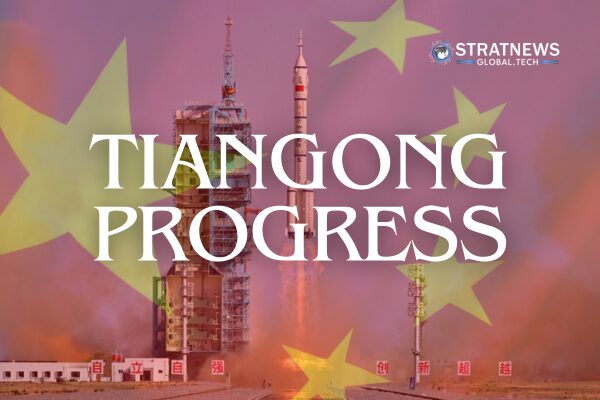Shenzhou-20 Astronauts Advance Scientific Work Aboard Tiangong Space Station
The Shenzhou-20 crew continues to make steady progress on the Tiangong space station this week, completing scientific experiments, installing equipment, and testing new technologies. The three astronauts entered the station on 25 April and have since completed multiple complex tasks in orbit.
New Plant Cultivation and Cytological Research Underway
Astronauts Chen Dong and Chen Zhongrui have installed a high-efficiency plant cultivation device in the Wentian laboratory module. After initial setup, they powered on the system and began a new round of plant growth experiments. These trials aim to improve space-based food production and long-duration mission sustainability.
Meanwhile, astronaut Wang Jie has conducted cytological studies in the Tianhe core module. He carried out sample observation, retrieval, and preservation using the human system research cabinet. This research explores how long-term spaceflight affects the human body and may also have applications for health conditions on Earth.
Medical Experiments and Robotic Collaboration Tests Continue
The crew is also working on multiple aerospace medicine experiments. These include studies on bone metabolism and integrative omics. Tasks completed include blood collection, centrifugation, and cryopreservation.
In parallel, astronauts have tested collaborative procedures with Xiao Hang, China’s first intelligent spaceflight robot. These trials explore how humans and robots can work efficiently together in space.
Microgravity Research and New Equipment Deployed by Shenzhou-20 Crew
Microgravity experiments continued as planned. Astronauts disassembled and assembled experimental setups, replaced samples, and maintained electrodes and observation ports across various scientific cabinets. These efforts support ongoing physics research in a low-gravity environment.
Last week, the Tianzhou-9 cargo spacecraft docked with the station, delivering about 6.5 tonnes of supplies. The delivery included consumables, fuel, and new research equipment—marking the largest cargo haul since Tianzhou-6.
Among the new items was a core muscle training device, now installed in the Wentian module. This device enables astronauts to perform upper body and core exercises with steady resistance. It helps prevent deep muscle atrophy and prepares the body for readjustment to Earth’s gravity after the mission ends.
Upgrades and Maintenance Support Long-Term Stay
The Tiangong station’s intelligent materials information management system has also been upgraded. This system tracks supply usage and location changes in real time, improving inventory management.
In addition to scientific work, the crew has been busy cleaning the station, organising supplies from Tianzhou-9, and performing routine maintenance. These tasks are crucial for ensuring a safe and efficient environment aboard the orbiting laboratory.
“with inputs from Reuters”



